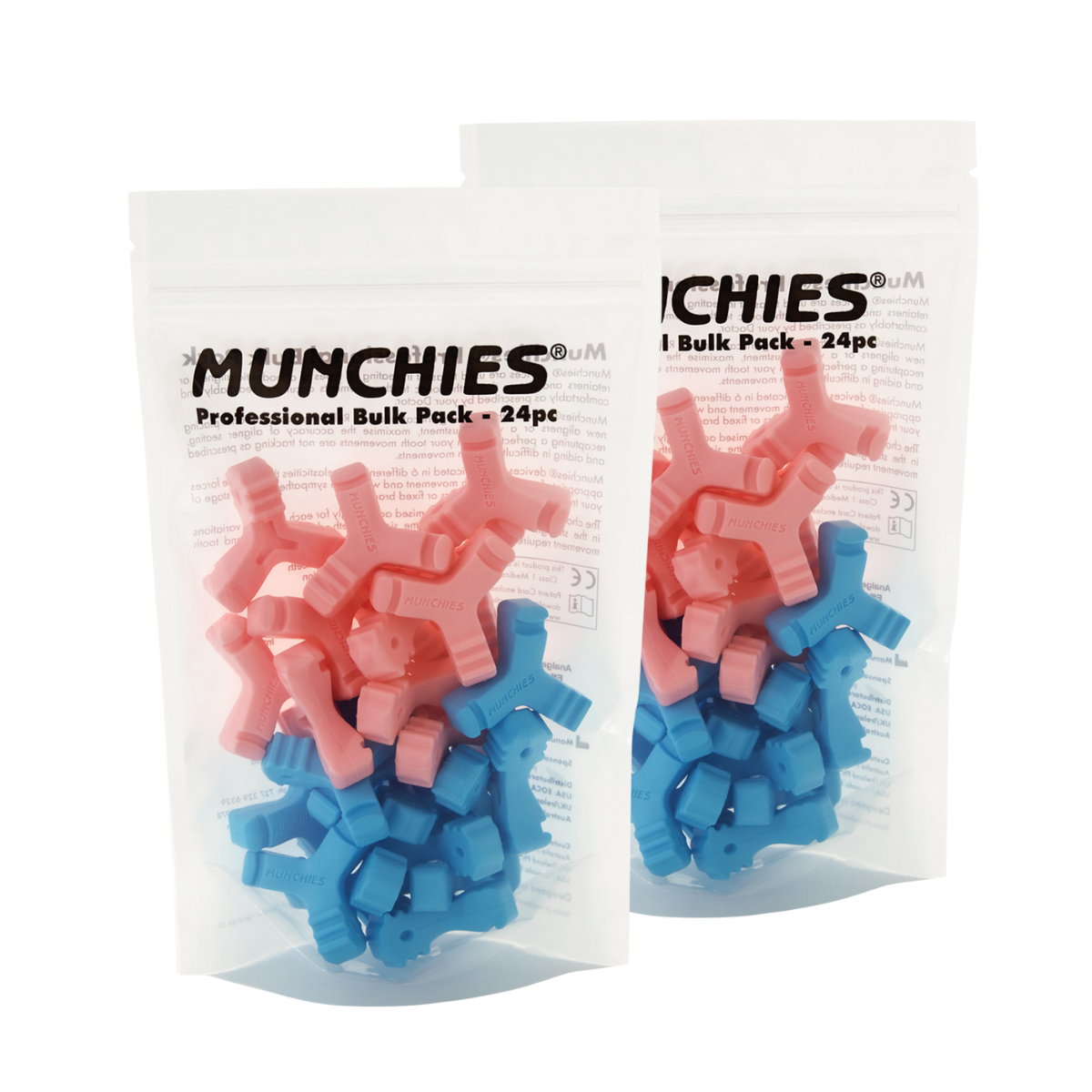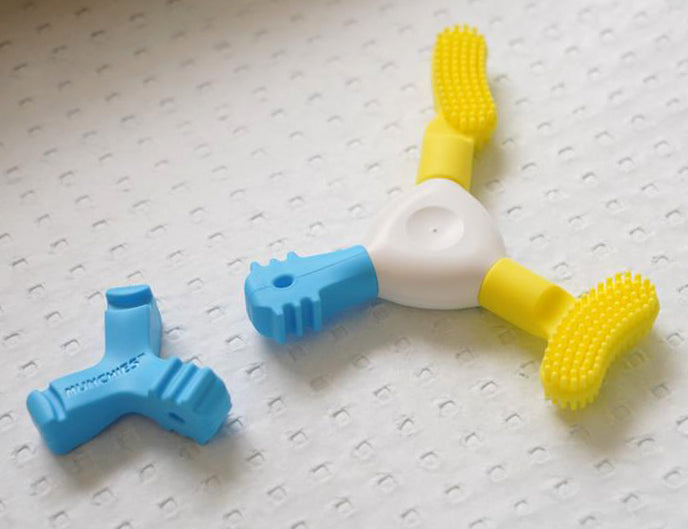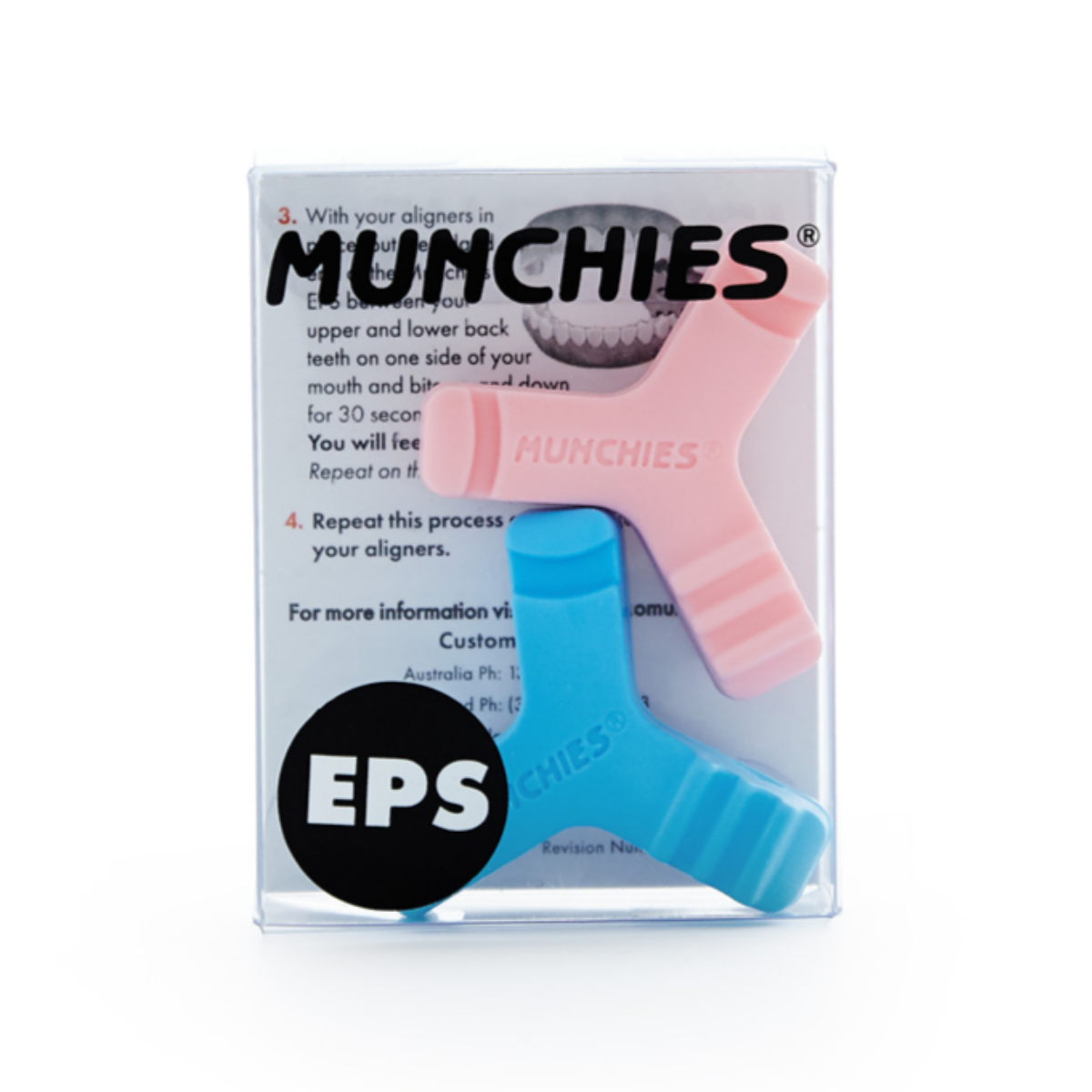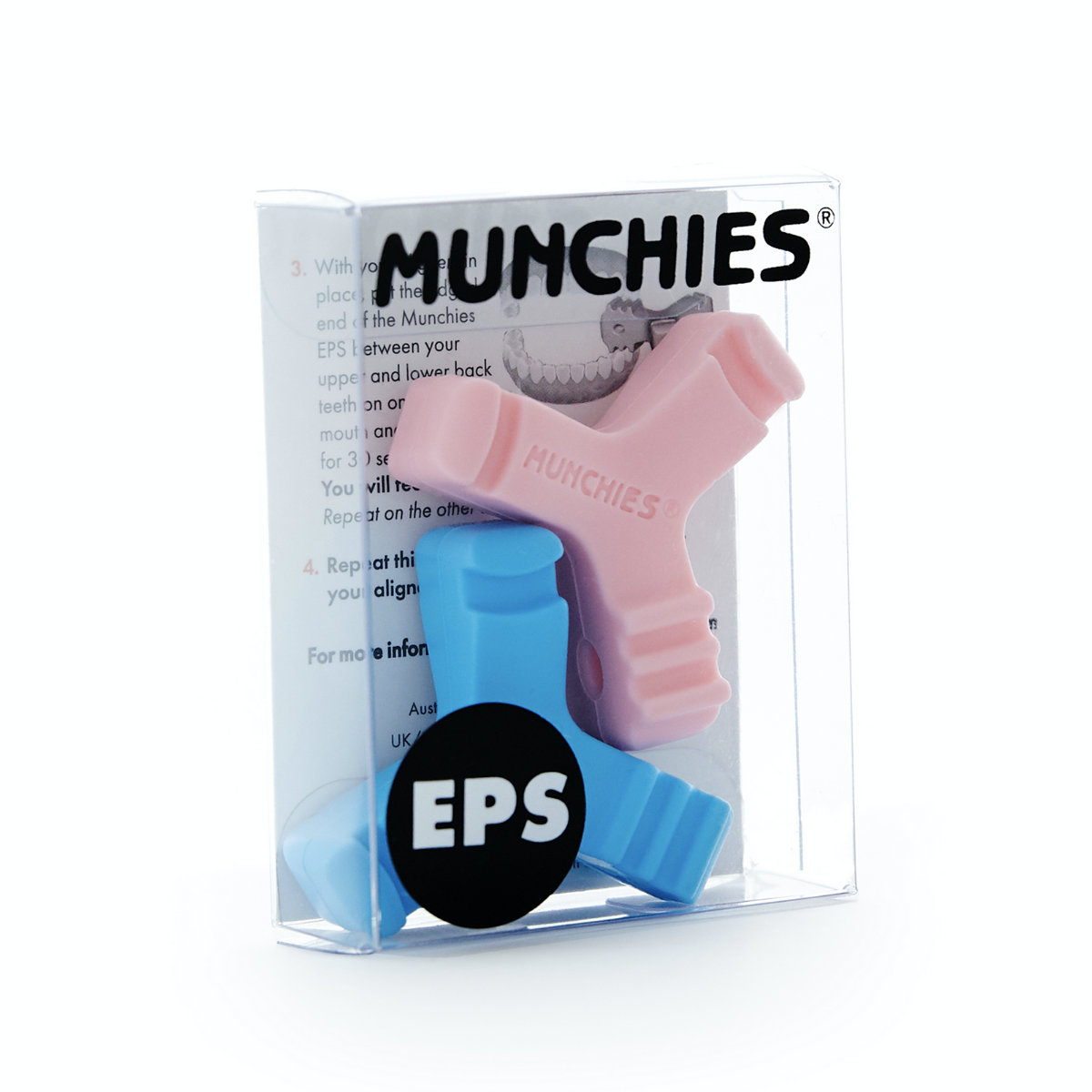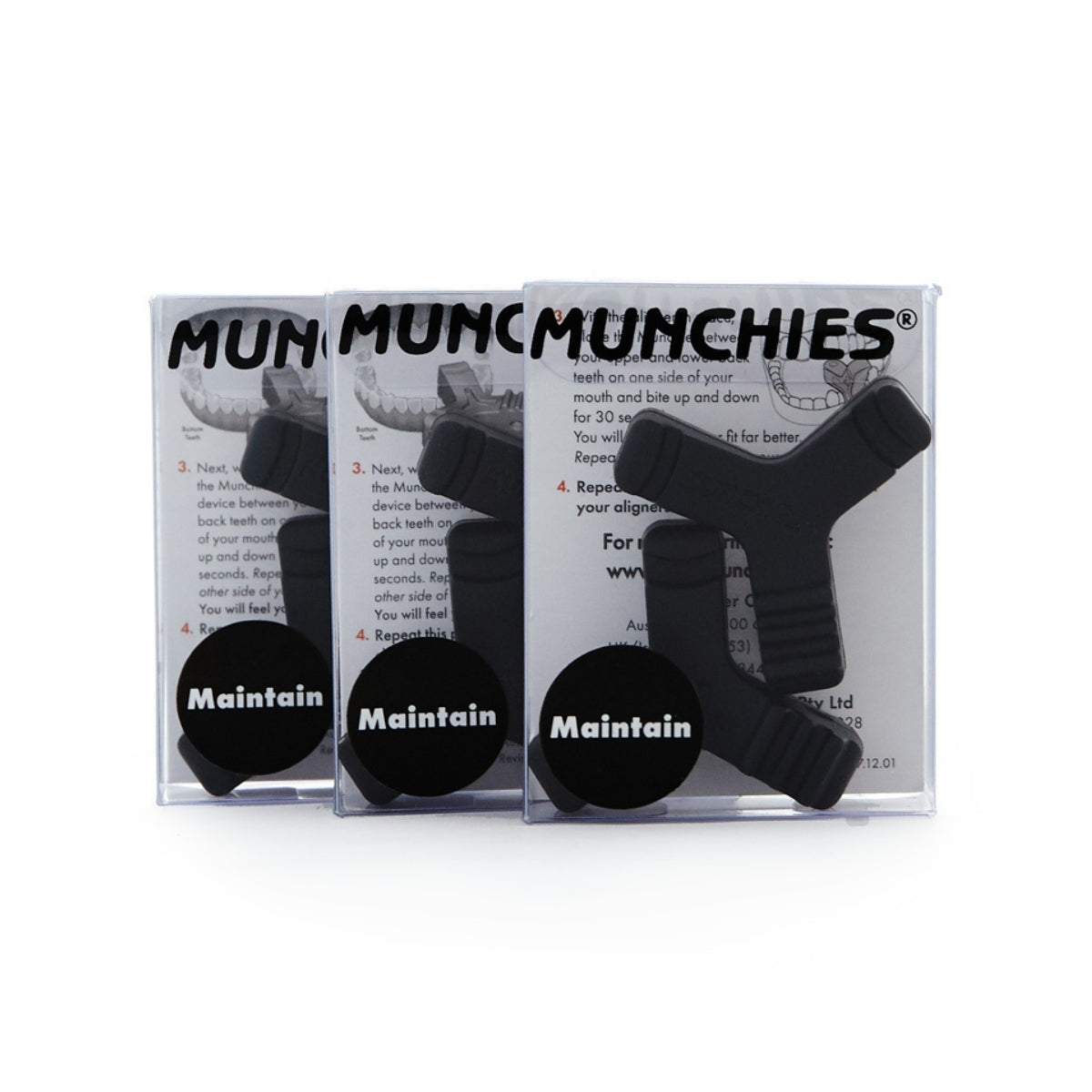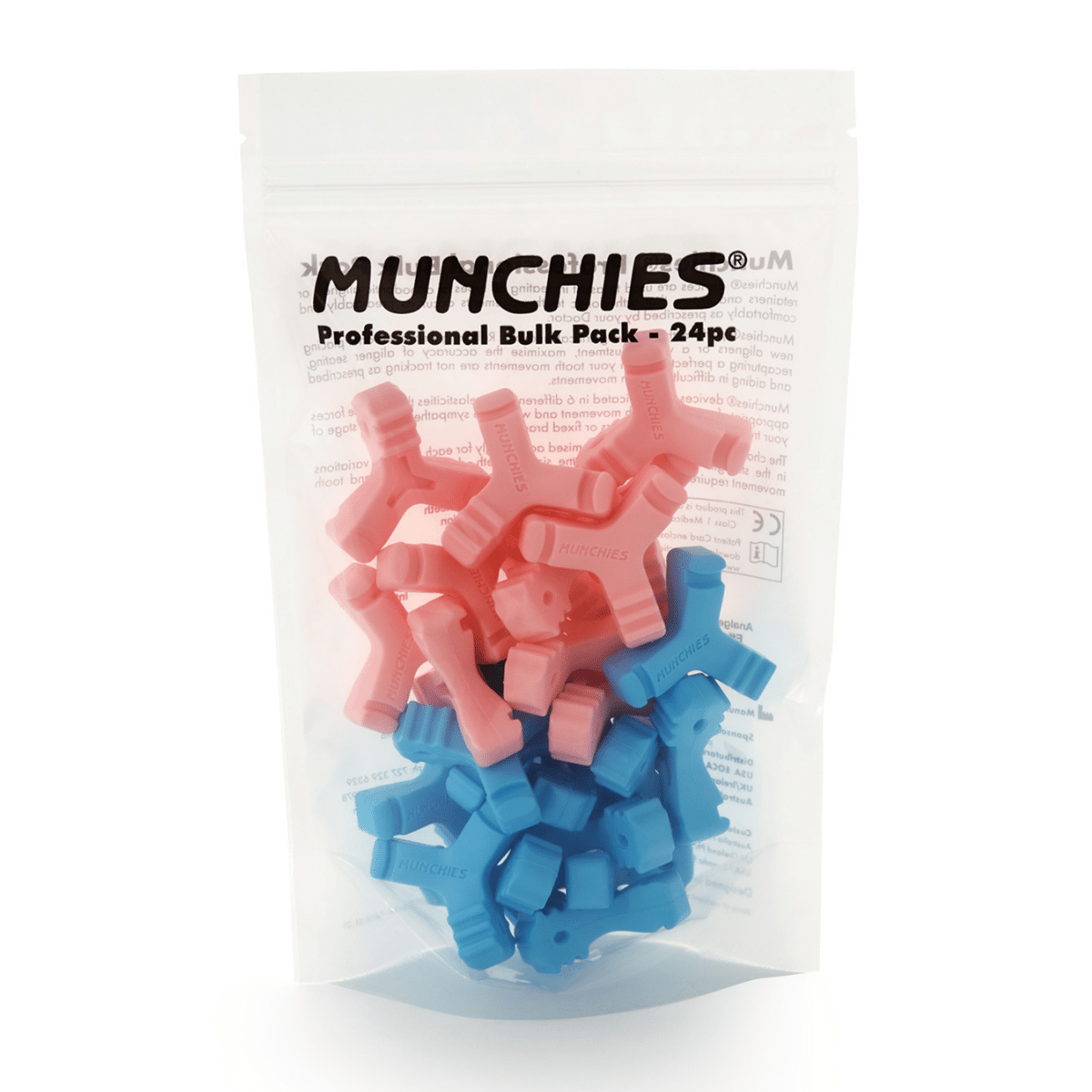Brief history of the Munchies
Munchies were first developed in 2015 to enable allow clear aligners to be seated as accurately and intimately as possible. The initial prototype encompassed only two ends and was affectionately known as the “Bone” and featured upper and lower anterior grooves on each end.
The next prototype featured a three arm version, designed to incorporate more specific seating of the aligners in the upper anterior region, lower anterior region and posteriorly.
The challenge initially was to engineer a medical grade silicon that had ideal viscoelastic properties which could envelop clear aligners, allow forces to be applied to seat them perfectly yet without causing any change in the morphology of the aligner.
Six differing hardnesses were tried and it soon became apparent that patients preferred a specific range.
After a successful launch and more than 200,000 devices prescribed, the original Munchie was joined by the EPS version (enhanced posterior seating) .
This device features a three ridged arm in addition to the standard anterior seating grooves.
The 3 ridged arm was designed specifically for seating aligners more effectively in the premolar region and features a distinctive shape that engages the occlusal fossa and extends more palatally over the aligner. This device has achieved remarkable success and patients instantly denote superior aligner seating and more normalised speech patterns after use.
Following this, the Munchies Maintain device was developed to seat clear orthodontic retainers which are 30% thicker and more rigid than aligners. A harder silicone was utilised which then helps clear retainers to be seated more effectively and can also be used to prevent and remediate minor relapse.
The Munchies devices continue to grow in popularity around the world and the engineering and dental team at the Postgraduate School of Dentistry in Sydney, Australia, continue to develop more paradigm shifting devices and technologies in orthodontics, oral medicine and aesthetic dentistry.


